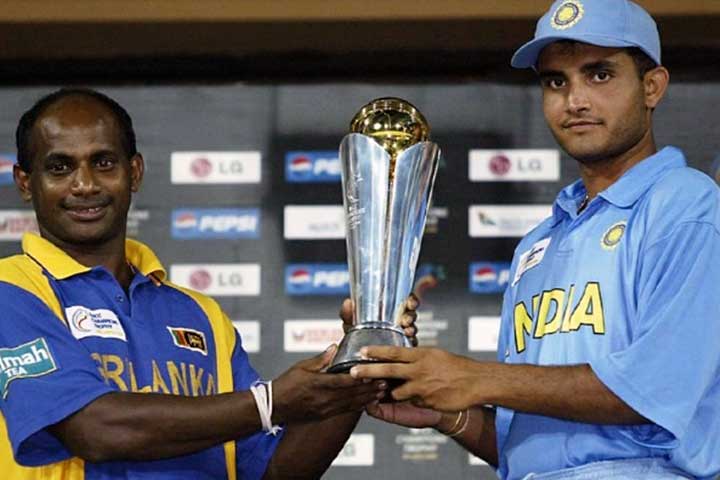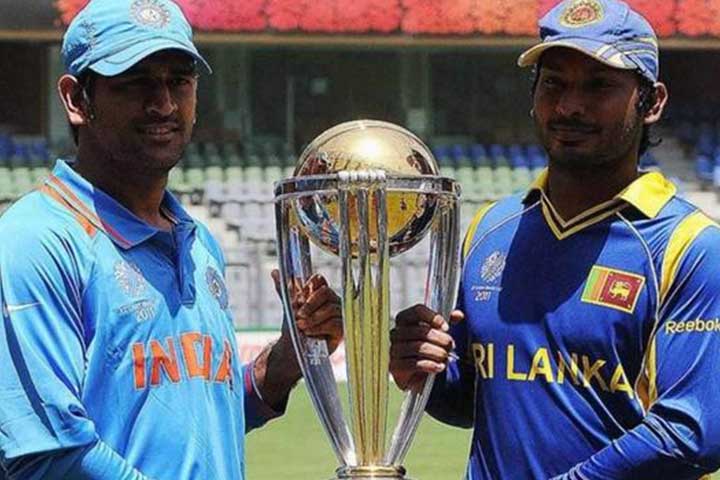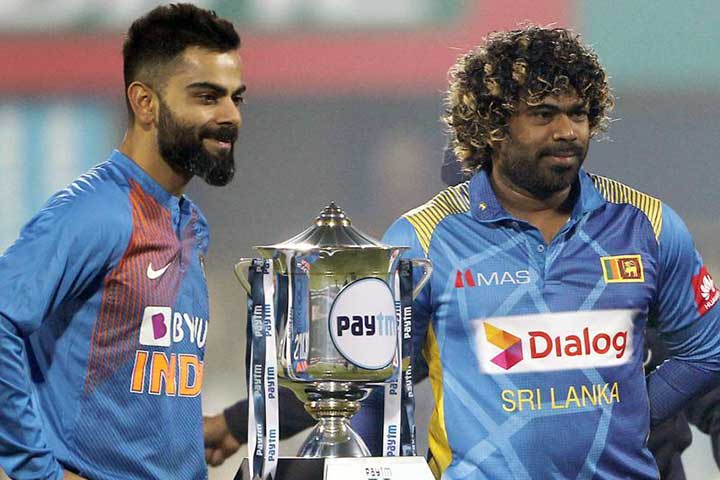One of the most captivating rivalries in international cricket is that between Sri Lanka and India; it is characterised by fierce competition, special moments, and a mutual love of the game. Both teams have demonstrated their abilities in a variety of formats during their meetings, which have spanned more than 40 years and included Test matches, One Day Internationals (ODIs), and Twenty20 Internationals (T20Is). This article charts the history of their rivalry, emphasising significant games, tournaments, and turning points that have shaped their cricketing bond.
Sri Lanka National Cricket Team VS India National Cricket Team Timeline: Early Encounters (1970s–1980s)
When Sri Lanka was still an associate member of the International Cricket Council (ICC) in the late 1970s, cricket relations between India and Sri Lanka started. India defeated Sri Lanka by 47 runs in a group-stage match at the 1979 Prudential World Cup in England, marking their first official ODI encounter. During this time, Sri Lanka began to gradually gain popularity in international cricket, while India was already a well-known cricketing nation.
Sri Lanka was granted Test status in 1982, and they played their first Test match against India in Chennai in September of that year. Under Sunil Gavaskar’s leadership, India dominated the game and won by 95 runs and an innings. Despite their early difficulties, players like Roy Dias and Duleep Mendis showed promise for Sri Lanka. India maintained its lead throughout the 1980s, with Sri Lanka frequently having to catch up. During a Test series in Sri Lanka in 1985, Arjuna Ranatunga’s tenacious performance helped the hosts earn their first-ever Test draw against India in Colombo.
The 1990s: The Rise of Sri Lanka
Sri Lankan cricket underwent a sea change in the 1990s, becoming a powerful force, especially in limited-overs cricket. With a number of memorable games, the rivalry with India grew more intense. India won a three-Test series against Sri Lanka in 1993, but the ODIs were closer matches. In a thrilling semi-final match during the 1993 Hero Cup in India, India defeated Sri Lanka by a slim margin thanks to Sachin Tendulkar’s heroics in the final over.
The 1996 Cricket World Cup, which India, Sri Lanka, and Pakistan co-hosted, was the decade’s turning point. Following India’s 251, Sri Lanka was cruising at 98/1 in the semi-final at Eden Gardens in Kolkata when play was stopped by a contentious crowd disturbance. Sri Lanka won the match, which was historic because it was their first time competing in the World Cup final. Sri Lanka won the tournament, solidifying their position as a cricketing powerhouse, thanks in large part to Aravinda de Silva’s undefeated 66.
During this time, bilateral series were extremely competitive. Sanath Jayasuriya (340) and Roshan Mahanama (225) combined for 576 runs as Sri Lanka defeated India in Colombo in 1997, setting a world record for the highest team total in Test cricket. Despite the heroic efforts of Mohammad Azharuddin and Sachin Tendulkar, India was unable to avoid a draw. This game demonstrated Sri Lanka’s depth at bat and their capacity to thrash India at home.
2000s: A Rivalry In Full Swing
The two teams played each other frequently in the 2000s, and both had elite players. Dynamic players from Sri Lanka, including Sanath Jayasuriya, Mahela Jayawardene, and Kumar Sangakkara, were able to match India’s batting lineup, which included Sachin Tendulkar, Rahul Dravid, and Sourav Ganguly. The renowned spinner from Sri Lanka, Muttiah Muralitharan, frequently caused problems for India, especially during Test matches.

Muralitharan claimed 23 wickets as Sri Lanka defeated India 3-0 in a home Test series in 2001. Sri Lanka’s supremacy on spin-friendly pitches was demonstrated in this series. But thanks to Virender Sehwag’s brilliant batting, India recovered in the 2001–02 ODI tri-series in Sri Lanka, defeating the hosts in the final.
The 2007 Cricket World Cup saw another significant clash, with India needing a win to stay alive in the group stage. With the help of fiery bowling from Lasith Malinga, Sri Lanka held India to 185 and easily chased the target, eliminating India from the competition. This game demonstrated Sri Lanka’s rising standing in international competitions.
One of the most memorable performances in the rivalry’s history took place in Karachi during the 2008 Asia Cup final. Ajantha Mendis of Sri Lanka deceived India’s batting order with his enigmatic spin, bowling them out for 173 and winning by 100 runs in 6/13. Mendis was added to Sri Lanka’s arsenal as a new weapon in this match.
2010s: World Cup glory and T20s
The emergence of T20 cricket in the 2010s gave the rivalry a new angle. India turned the tide in the 2010 Asia Cup final, defeating Sri Lanka handily thanks to Dinesh Karthik’s steady 66. But in the 2011 Cricket World Cup final, which India co-hosted, Sri Lanka had their chance. Gautam Gambhir’s 97 and MS Dhoni’s legendary 91* helped India reach 274 runs, but Sri Lanka lost by six wickets. One of the most memorable moments in cricket history is still Dhoni’s game-winning six.

The 2014 T20 World Cup final in Dhaka was a crucial match in T20Is. Sri Lanka won their first T20 World Cup after relying on Mahela Jayawardene and Kumar Sangakkara to secure a six-wicket victory while chasing India’s 130. After the game, Jayawardene and Sangakkara retired from T20Is, so this victory was a fitting send-off.
India dominated bilateral series in the 2010s, especially in ODIs. India won several series in Sri Lanka under MS Dhoni’s leadership, including a 5-0 thumping in 2017. The balance was further shifted by Virat Kohli’s rise to prominence as a batting maestro, who consistently outperformed Sri Lanka in all formats.
A New Era Has Started In The 2020s
Both teams have changed in the 2020s, with younger players taking the lead. A second-string Indian team captained by Shikhar Dhawan travelled to Sri Lanka in 2021 for a limited-overs series. India demonstrated their depth by winning both the ODI and T20I series 2-1. Wanindu Hasaranga of Sri Lanka emerged as a crucial all-rounder, while players like Suryakumar Yadav and Prithvi Shaw made an impression.

India defeated Sri Lanka in a Test series in 2022, winning 2-0, thanks to the batting prowess of Ravichandran Ashwin and Jasprit Bumrah. India also won the T20I series, sweeping the field 3-0. Bhanuka Rajapaksa’s aggressive batting, however, sealed a tense chase as Sri Lanka defeated India in the Super Four stage of the 2022 Asia Cup.
By 2025, the rivalry is still going strong as both teams adjust to the demands of contemporary cricket. More exciting matches are anticipated thanks to Sri Lanka’s spin-heavy strategy with Hasaranga and Maheesh Theekshana and India’s pace attack led by Bumrah. Shubman Gill and Shreyas Iyer led India to a 302-run victory, one of the biggest margins in World Cup history, in a group-stage match against Sri Lanka during the 2023 Cricket World Cup.
Statistical Overview Of Sri Lanka National Cricket Team VS India National Cricket Team Timeline
In their 44 Test matches as of July 2025, India had won 22, Sri Lanka had won 7, and there had been 15 draws. They have played 168 ODI matches, with India leading 99–57 and 12 games ending in a draw. India has a 19–10 lead in 30 Twenty20 International matches. Although these figures show India’s overall superiority, the rivalry has remained lively due to Sri Lanka’s production of match-winning players like Muralitharan, Sangakkara, and Hasaranga.
In Conclusion
From World Cup heroism to record-breaking partnerships, Sri Lanka National Cricket Team VS India National Cricket Team Timeline is a tapestry of memorable moments. India has frequently had the advantage, but Sri Lanka’s tenacity and style have led to memorable triumphs. The rivalry promises to produce more exciting chapters in the years to come, enthralling fans worldwide as both teams develop and new stars emerge.
Also Check Related Article: Australian Men’s Cricket Team Vs India National Cricket Team Timeline

